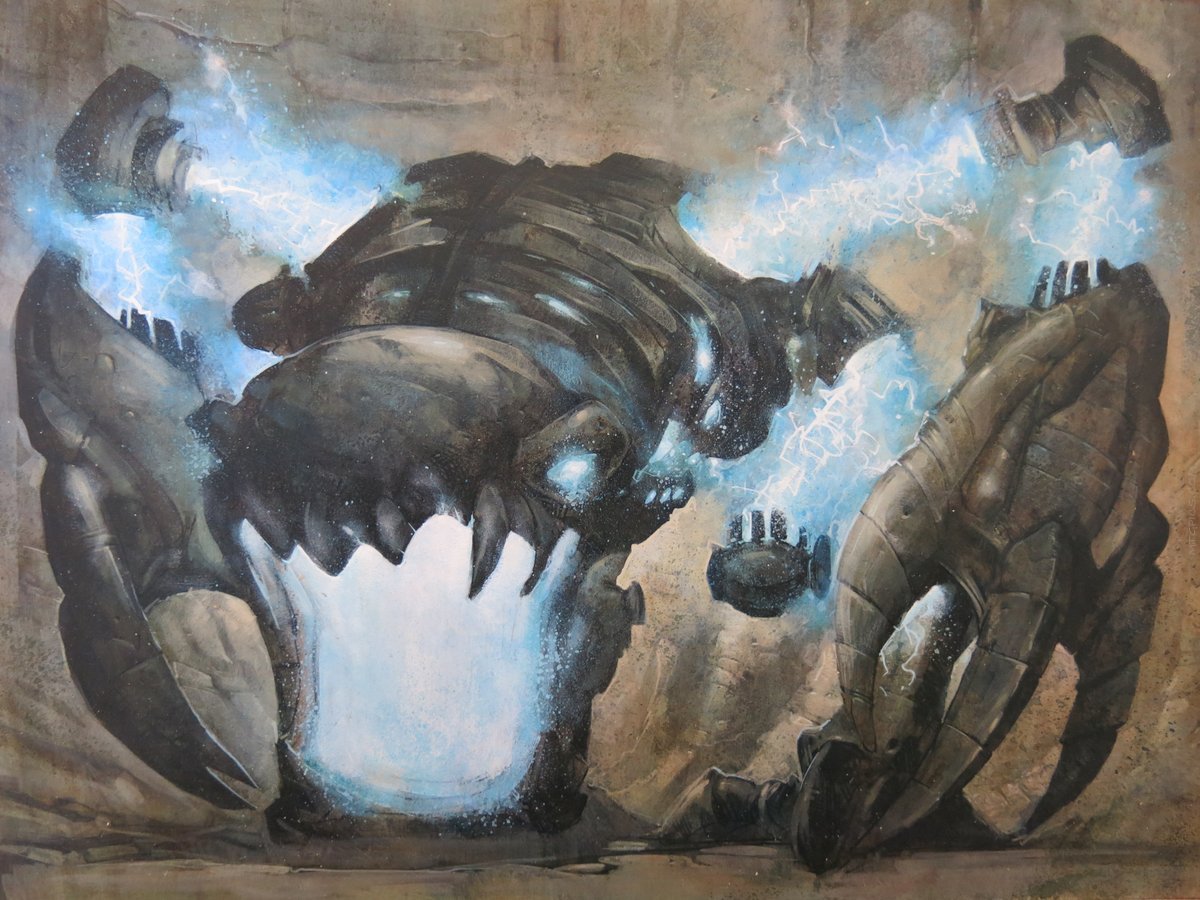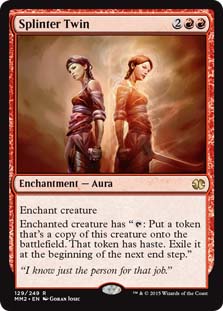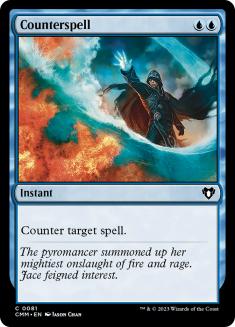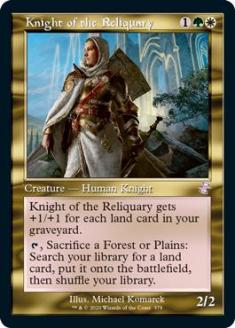Spring is finally in full swing here in Minnesota, and after several long and bitter months, we can finally start to appreciate some beauty in the world again. There are plenty of problems that a little sunshine can’t fix, but it’s also important to celebrate the small victories. I find myself most motivated at this time of year, so it makes sense to me to tackle a broad strokes Cube topic that I’ve had on my to-do list for some time. Today I’m going to breakdown how to decide what kind of Cube you want to build.
At this point I’ve published quite a lot of my own Cubes, and it probably goes without saying that I’ve designed an even greater number that haven’t gotten so much exposure. I’ve been playing Magic for nearly 20 years and I’ve always had a passion for building decks, which naturally translated to a passion for designing Cubes. I approach Magic with a natural curiosity, and I’m always wondering what sorts of things are possible with the game. It’s not uncommon for me to ponder the implications of some card new or old and spitball the sort of environment that would make playing with that card enjoyable. One of my favorite events that came from recording The 540 was when I theorized a Cube that featured multiple copies of cards like Kindle and Accumulated Knowledge that would cause players to navigate how to get the most value from whatever number of copies of these cards players thought they could draft and a listener went on to design and build just such a Cube!
Of course, everyone approaches the game differently, and the concept of designing a Cube or even a deck is more daunting for some than others. When I first started playing kitchen table Magic, I had a friend who would try to trade me for my decks because he thought they were cool and didn’t feel inspired to design his own. Whatever your comfort level or desire to design a Cube, today I’d like to demystify the process of choosing what sort of Cube you’d like to own and break down the various avenues to building your own Cube.
Imitation is the Sincerest Form of Flattery
The path of least resistance to owning a Cube is to eschew the design process entirely! In the early days of Cube, there were some good fundamental ideas floating around, but for the most part you’d encounter a stack of cards that the Cube designer liked. Cube is still largely an exercise in self-expression, but the Magic community at large has had much more time and work put into determining the sorts of things that lead to better Cube games and drafts at this point. We also have more Cube lists and easier access to playing Cube through Magic Online and Magic Arena.
It’s very common for players to just build the Magic Online Vintage Cube. I’ve seen over a dozen physical copies of that Cube over the years without ever actively seeking one out. Simply by virtue of being regularly offered on Magic Online, this is the most played Cube of all time. This is not to say that it’s the ideal Cube or anything, but a lot of people have played it and even more people are on some level familiar with it. There’s an air of legitimacy that comes with the level of exposure that this Cube has that makes it appealing to build and for others to play.
Vintage Cube is the most high profile example, but any of the digital Cubes have a very nice “try before you buy” feature. If you build a one-off Spotlight Cube, it’s less likely that your play group had the opportunity to play it, but you’ll at least have had the ability to try the Cube out and decide it was your kind of thing.
I’ve been humbled by the number of people who have built their own copies of my 180-card Twoberts, and am happy to offer my designs up as fun environments for two or four players. The original Twobert, the Tempo Twobert, and the Peasant Twobert have been my most popular designs to date.
It’s also very easy to make minor, or even major edits to an existing Cube as you and your playgroup work out what you like and dislike. The most significant step you’ll take on your Cube journey is just getting something together and starting to play. Figuring out where to go from there is much easier than just sitting around theory-crafting.
Paying Homage
Another approach to Cube design with a lower barrier to entry than trying to build something entirely from the ground up is to design a Cube to pay homage to a different play environment. This is actually my most common approach to Cube design, and tends to lead to the easiest elevator pitches to explain what your Cube is about. The Tempo Twobert, for example, is evocative of fair matchups in Legacy Constructed.
A very common type of Cube is what is called a Set Cube. Set Cubes exist to more or less replicated a retail Booster Draft environment. They only use cards from a specific set or sets, and usually feature multiple copies of commons and uncommons while keeping rares and mythics to singleton. Drafting these Cubes typically involves seeding packs rather than fully randomizing the Cube so that you see the number of cards at a specific rarity that you normally would in Booster Draft. Tolarian Community College did a pretty thorough breakdown of Set Cubes on YouTube for those looking for more information on this concept.
If you’re like me, you’re generally more interested in Constructed Magic than Limited, so Set Cubes aren’t really my thing. I am a huge fan of Innistrad and drafted the set a ton back when I was more interested in Limited, but these days I like my Cubes to have a little more kick. My Spooky Cube is an example of Cube that starts with the premise of enjoying a specific set but then adding cards from the entire history of Magic to really jazz it up. That project has since evolved into a modular Twobert that is an even deeper exercise in developing these themes.
A Cube can be a reflection of any Magic format, Constructed or Limited. Whether you take this motivation and only use cards from that specific Constructed or Limited environment or enhance that format with cards from other points in Magic’s history, there’s all kinds of ways to construct Cubes that feel like your other favorite ways to play. The third module of my Time Capsule Cube has been a huge hit with my old PTQ group because we all played so much Magic in the 2010s, and is a great example of a Cube that is reminiscent of an era of Constructed Magic.
Fundamentally Modifying Existing Cubes
This next category is more specific and requires a fair amount of experience playing Cubes, but was the basis for one of my first Cube designs. Let’s say that you really enjoy playing Cube, but there are parts of it that just aren’t clicking. There are any number of things that you could dislike about Cube or Magic broadly. Maybe you’re not into combos, maybe you’re not into counterspells. For me, I’m really not into cards that are regularly last picks.
Ryan Saxe and I agree on many things Cube, but disagree on some things as well. One thing that we agree on is that green and white is by far the most awkward color pair, and that it’s really tough to figure out what to do with these colors in high powered Cubes. Facing the same problem, Saxe and I implemented very different solutions.
Saxe pushed green and white to have more of a combo focus, offering heavy support for Persist Combo in his Classic Cube. I said to hell with it and built a Grixis Cube. Both Cubes borrow a ton from established Cube lists, and you’ll see a lot of overlap with either and the Magic Online Vintage or Legacy Cubes. Neither design was a process in building a Cube from the ground up, these Cubes are rather an exercise in highlighting what we liked about existing Cubes and changing the parts that we didn’t like.
There are more subtle and more dramatic ways to take this approach, but no matter how dramatic a shift you make it’s clear to see that this path offers less resistance than starting from scratch. A Cube isn’t better or worse because you worked harder at it or for being more radically different from anyone else’s Cube, and I found a lot of fulfilment with this approach.
The Ground Up Approach
And lastly, you can go out and completely do your own thing. Even with this approach you’ll no doubt pull some inspiration from other Cubes or at least end up overlapping some with other designs by choice or by accident, but there’s plenty of space to craft something unique all the same.
A surface level analysis would place Grixis Cube in the same camp as other color-restricted Cubes, but I would argue that the other color-restricted Cubes we have seen on Magic Online were far more novel, while my Grixis Cube highlighted the fact that many high powered Cubes are just Grixis Cubes anyway. Ellie Rice’s Temur Cube and Autumn Burchett’s Bant Cube invited players to explore more new archetypes and approach the Cube in less traditional ways. Grixis Cube loudly declared the three most powerful colors for high powered Cubes, while Temur and Bant Cube were more aesthetic declarations that Temur and Bant are sweet, and that it would be fun to play with only Temur or Bant cards.
Designing your own Cube from the ground up then, is a matter of making such a positive declaration and then fleshing out your idea. Rather than taking a finished product and making modifications to fit a different ideal, you’re taking an ideal and building it up to be it’s own product.
There are many ways to go about this. You could build your own color-restricted Cube, you could start with the premise that graveyard decks are cool, you could focus on a specific tribe or even tribal as a broad concept. Again, you could take anything you like about Magic and decide that this will be a micro-theme in your Cube or the macro-theme of your Cube.
My first modular Twobert article offers some good insights on designing a Cube with a theme for every two-color pair in mind, and that’s a very formulaic and easy to follow approach to Cube design. Alternatively, you could take any aesthetic or technical gimmick and run with it. An all old-border Cube would be an example of a Cube with a heavy aesthetic focus, whereas something like Counting Cube is a Cube driven entirely by a mechanical gimmick.
Try and Try Again
Before I close things out today, I just want to make clear that not every idea that you have is going to work. That might sound discouraging, but the silver lining is that every idea that you try will teach you something. My designs that I end up building and enjoying will often incorporate several ideas that I had tried before but didn’t quite come together the way I had wanted. I offered that the ground up approach to design can involve starting with some gimmick, but in my experience it’s more true that it’s the amalgamation of several attempted gimmicks that leads to the best Cubes. The only way to really find out though is to get your hands dirty. Many Cube owners will be content to take an existing list and make few if any changes, but this process of trial and error in design is what keeps me invested in Cube personally.
I’d also like to note that some Cube designs are the result of something of a hybrid approach to the methods I’ve outlined today. It’s not uncommon for an attempted modification to result in building something different from the ground up. A friend of mine once attempted to introduce an aggressive artifact deck to his powered Cube that ultimately fell short. It was cool to see Arcbound Ravager in Cube packs, but it just wasn’t working out. I later went on to build my own Cube from the ground up starting from the premise that Arcbound Ravager is cool; the Artifact Twobert. Similarly, sometimes you try to build something from the ground up that just doesn’t add up to its own full and functional environment and end up incorporating the parts you like into a different design. It won’t always be obvious whether an idea you have is more fit to incorporate into an existing framework or to build a new one, so again I offer that the best way to figure it out is to try one out and see how it goes!
When I first started writing about Cube, I wrote an article about Cube design that I saw as a level 1 intro to the concept. As I’ve had more conversations with those newer to Cube draft I now understand that today’s article is a more appropriate introduction, and the previous article serves better as a follow-up to this piece. If you’re wondering what comes next after reading today’s article, then I’d recommend So You Want to Make a Cube:
I tweeted recently that the greatest joy that comes from Cube draft lies in design, and I firmly believe that. I’m hoping that this article will serve as a springboard for some prospective Cube designers that were having trouble figuring out what to build. May this be the start of a long and beautiful journey.




